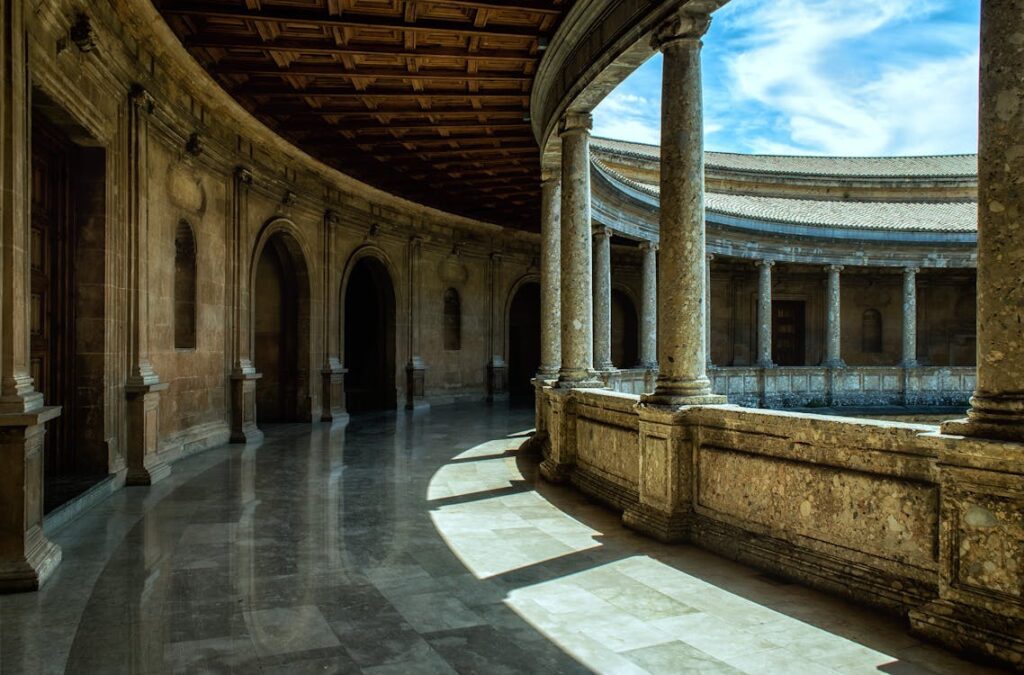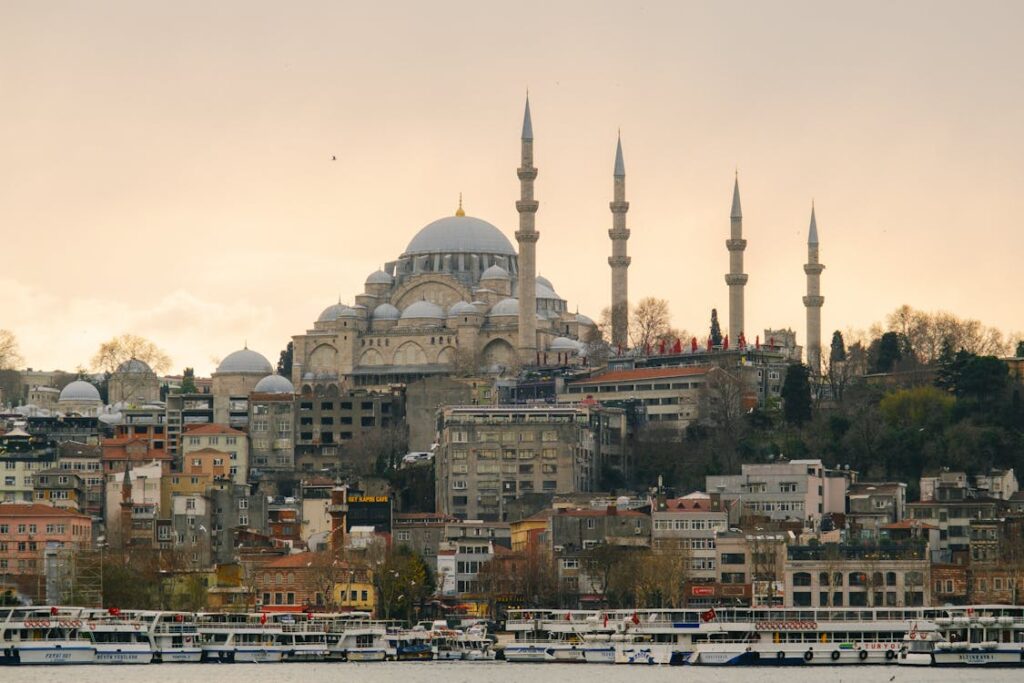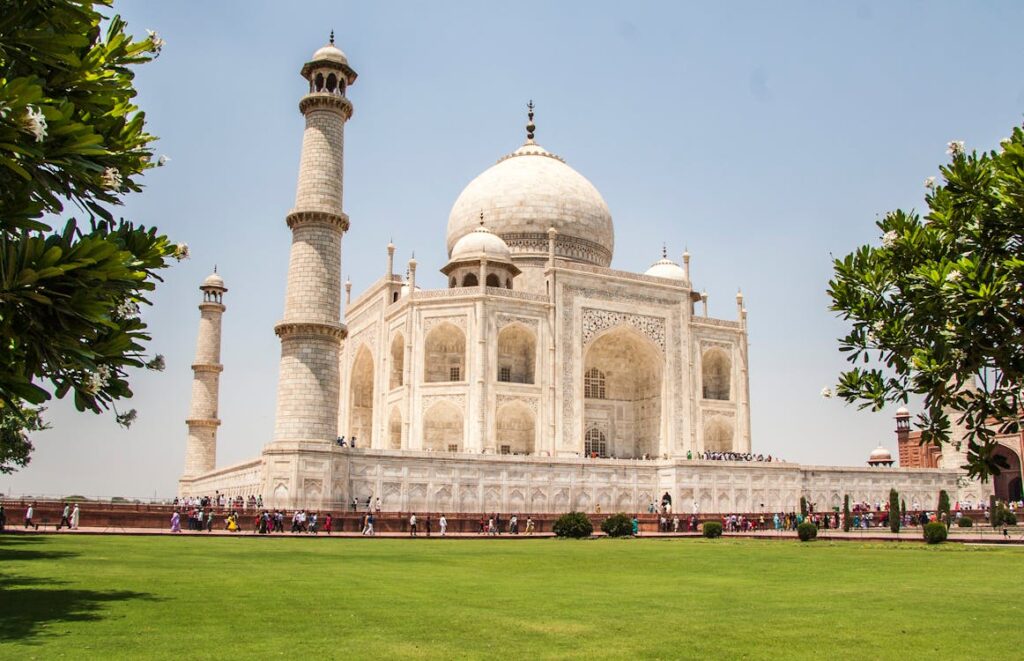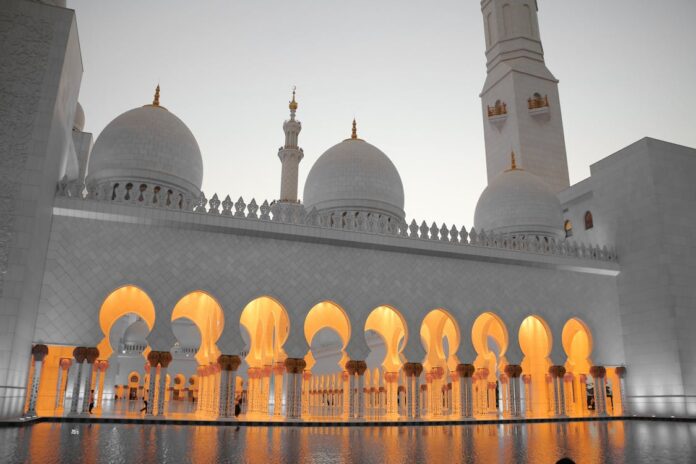In this captivating exploration, we will unravel the intricate threads of Islamic culture, tracing its roots through centuries of craftsmanship, divine inspiration, and ingenious mathematical precision. So fasten your seatbelts, for we are about to embark on a voyage into the mesmerizing world of Islamic art and architecture.
What is Islamic Art and Architecture?

Islamic art and architecture have left an indelible mark on the global artistic landscape. Their influence extends far beyond the boundaries of the Islamic world, encompassing regions such as the Middle East, North Africa, Central Asia, South Asia, Europe, China, and Southeast Asia. But what defines Islamic art and architecture?
- Geometric and Floral Patterns: At the heart of Islamic art lies a fascination with geometry. Intricate geometric patterns adorn everything from mosque walls to pottery. These designs symbolize the infinite nature of God and create a sense of harmony and order.
- Calligraphy: Islamic calligraphy is more than just beautiful writing; it is an art form that transcends mere words. The flowing curves of Arabic script decorate religious texts, buildings, and even everyday objects. Each stroke carries spiritual significance, and calligraphers strive for perfection in their compositions.
- Representations of Life: While Islamic art avoids direct depictions of living beings, it celebrates the natural world through stylized motifs. Floral designs, arabesques, and vegetal patterns evoke the beauty of creation.
The Role of Calligraphy
Imagine standing in a dimly lit mosque, the air scented with incense, and your eyes drawn to the mesmerizing calligraphy adorning the walls. The words of the Quran come alive, their curves and loops dancing in reverence. Calligraphy is not merely decorative; it is a bridge between the earthly and the divine.
Famous Examples
Let’s journey to some iconic sites:
The Alhambra, Spain: Nestled in Granada, the Alhambra is a symphony of arches, courtyards, and intricate tile work. Its Nasrid Palaces showcase the pinnacle of Islamic architecture, with delicate stucco, muqarnas, and serene gardens.

The Blue Mosque, Istanbul: With its cascading domes and six minarets, the Blue Mosque (Sultan Ahmed Mosque) stands as a testament to Ottoman architecture. Step inside to witness the grandeur of its Iznik tiles and calligraphy.

The Taj Mahal, India: Shah Jahan’s ode to love, the Taj Mahal, combines Persian, Indian, and Islamic influences. Its white marble façade shimmers in the sun, adorned with intricate floral motifs and Quranic inscriptions.

The Great Mosque of Mecca: The epicenter of Islam, the Masjid al-Haram, surrounds the Kaaba. Its vast courtyard accommodates millions of pilgrims during Hajj. The Kaaba itself is a simple cube, emphasizing unity and devotion.

Beauty Expressed
Islamic art and architecture celebrate the divine through beauty. Whether in the delicate tracery of a mihrab or the rhythmic repetition of a geometric pattern, each stroke whispers of eternity. It is a journey where faith meets form, and where the rich tapestry of human creativity weaves itself into the fabric of existence.
So next time you admire an intricate tile or gaze upon a soaring dome, remember that you are witnessing more than art; you are glimpsing the soul of a civilization that spans continents and centuries.


